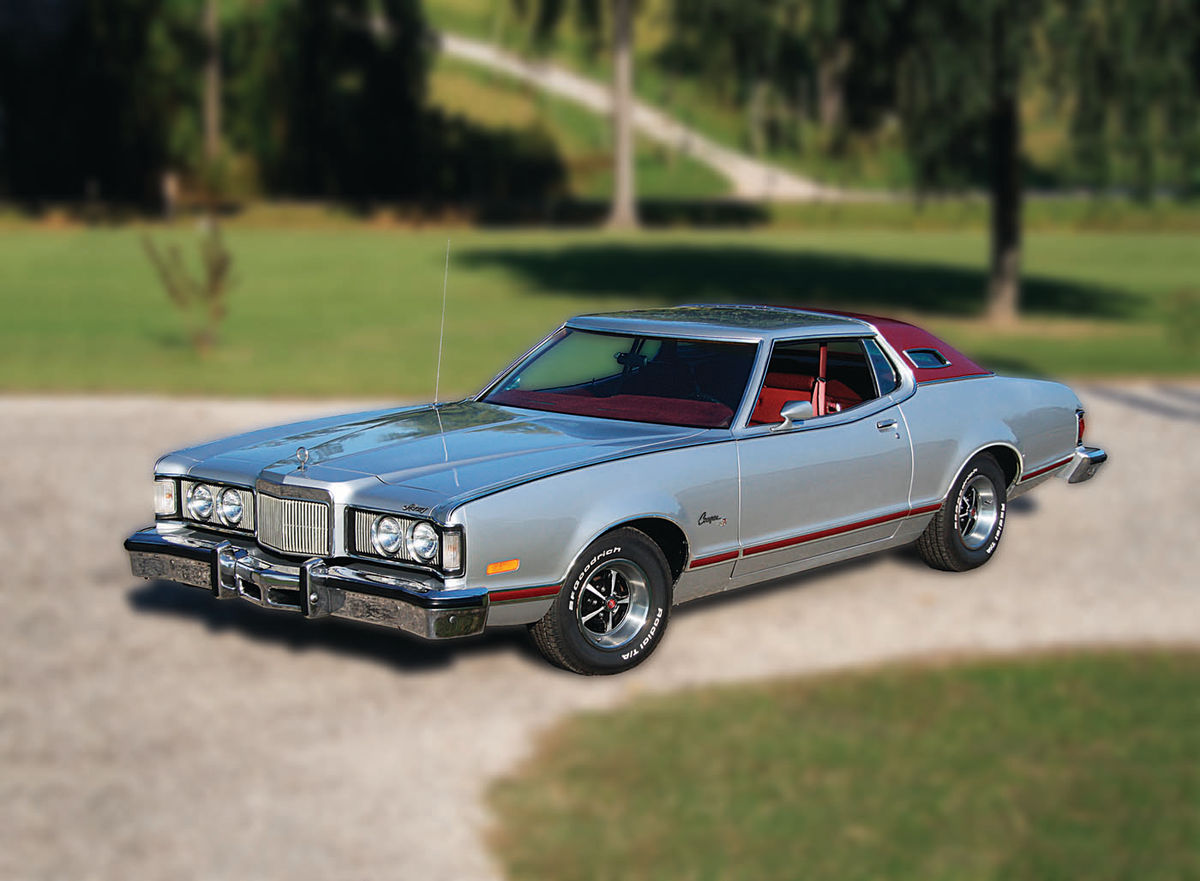1975 Cougar XR-7
He Wanted a Nice Driver, Not a Concours Contestant…and He Found It In This 40-Year-Old Uncommon Car “From the Sign of the Cat.”
IF YOU ARE of a certain age, perhaps you remember the television advertisement for the 1975 Cougar XR7 featuring the late Farrah Fawcett Majors appearing with…a real cougar.
The ad narrator told us that the Cougar XR7 was “restless, civilized, a challenger, serene…an uncommonly luxurious breed of personal car…with the rich feel of glove-soft vinyl on thickly padded bucket seats; with a full-array of instruments clustered for easy viewing…Mercury Cougar XR7—at the sign of the cat!” That “sign of the cat” theme was introduced with the original 1967 Cougar and it continued to be used for many years. The Cougar, in fact, was so strongly associated with Mercury that the ad theme ultimately was used for all Mercury cars.
From a Pony to a Luxurious Cat
When the Cougar was introduced (in two versions, base and XR7), it was a mem ber of the pony car set, based upon the unibody Mustang.
However, even then the Cougar was a more sophisticated car than its close relative, described by one journalist as “a sporty, compact Cadillac.” Though FoMoCo’s big block engines were offered at extra cost, the Cougar was perceived as a luxury grand touring vehicle rather than a high-performance car. And with changing market conditions, such as higher insurance premiums for bigengined cars and new federal regulations regarding emissions, the Cougar further evolved to fit, with even more emphasis being placed on luxury and styling.
A major change in direction for the Cougar came in 1974 when its ties with the Mustang were severed. That year saw the Mustang downsized to the Mustang II and if the Cougar had followed the same route, it would have provided direct competition for Mercury’s compact Capri captive import.
Instead, the 1974 Cougar moved into the intermediate class, now sharing a chassis with the larger Mercury Montego/Ford Torino. Interestingly, it was upsized and moved into the personal luxury car segment at a time which came to be known as the industry’s “downsizing decade.”
The Cougar, now available only as the XR7, had a wheelbase of 114 inches, length of 215.5 inches and width of 78.6 inches. It weighed in at 4255 pounds— nearly 840 more than the 1973 version.
Naturally, the changes brought a completely different feel in the way it rode and drove. The Cougar was now perceived as a mini-Mark IV, Lincoln’s topof-the-line personal luxury model.
The 1975 model like the one on these pages changed little from the prior model year in which 91,670 of the Cougars were sold, a 50 percent increase over the output for 1973. However, 1974’s momentum was not sustained for 1975 as demand dropped by nearly one-third with 62,987 finding buyers, something that can no doubt be attributed to a hefty price increase of $512 (due in part to more standard equipment), more competition (Chrysler’s Cordoba), and economic conditions. Sales ticked upward for 1976 with 83,765 units sold as the sticker price dropped by nearly $100.
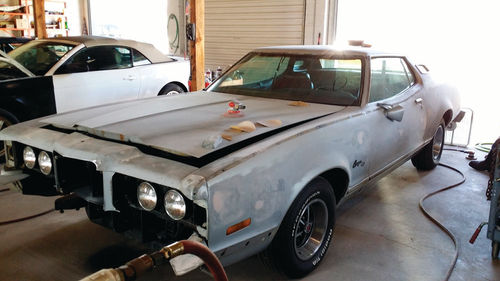
Now, About Performance…
Performance considerations were not entirely eliminated with the upsized, upscale Cougar. For 1974 only, the 351CJ (Cobra Jet) was an option but few were ordered. In keeping with the times, it had been detuned since its introduction some years earlier and was rated at 266 hp at 5400 rpm. The cars equipped with this engine had a “Q” as the fifth character of their serial number. Regardless of the engine chosen only an automatic, the three-speed C4 (351) or C6 (400, 460), was available.
The “Traction-Lok” differential was among the list of options offered for both 1974 and 1975.
The Lure of One He Owned Before

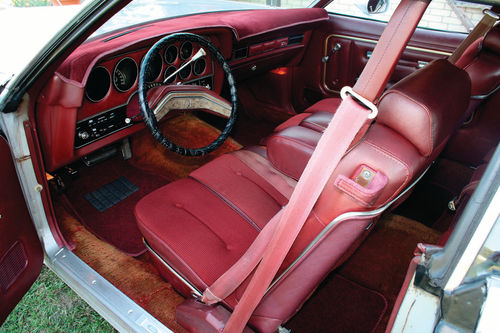
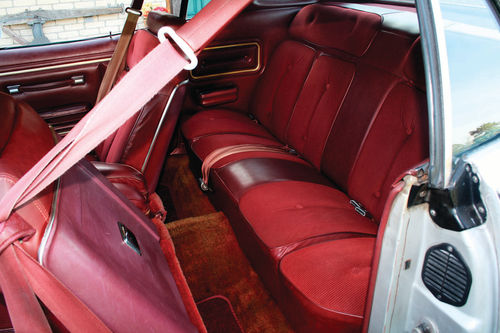
During the spring of 2011, James Buie, Jr., of the east Texas town of Diana was browsing the car ads on Craigslist.com when one of them caught his attention. A 1975 Cougar XR-7 was being offered for $1500 and was located in Winnsboro, just a little more than 40 miles away.
Buie’s first new car was a 1976 Cougar XR-7, a car he had liked very much. So he felt he had to at least inspect the ’75 model now for sale.
Upon arrival, Buie found a car which had been parked outside for five years and had begun to sink into the ground. Clearly, it could not be given a test drive. He also noted a rotted landau-style vinyl top and evidence of rust. With the owner’s permission, Buie removed a large section of the vinyl which revealed pinholes and surface rust. (The pinholes were then covered with an abundance of duct tape--a crude, temporary fix.)
An older, inexpensive repaint was flaking off, too. On the plus side there was no other body damage, the engine was not seized, and most of the interior was in good condition.
Buie made an offer of $800 which was accepted. His latest acquisition was then loaded onto his trailer, transported to his home and placed inside his shop where it sat for several months. After all, Buie was not without vintage rides to occupy his free time. Among his cars were a couple of “Smokey & the Bandit”-era Trans Ams and a 1968 Ford Country Squire. Furthermore, another car from his past, a 1962 Ford Thunderbird, was featured in Auto Restorer about 20 years ago.
On the Prowl Again
Eventually, the Cougar started to receive some attention. Buie drained the old gasoline from the fuel tank, replaced the fuel pump and ignition switch, sprayed the cylinders with WD40, and installed new spark plugs and plug wires, and added fresh fluids. With gas in the tank and the carburetor primed, he started the car and found it to idle well.
In small, careful steps he began testing the Cougar: He put the gear selector in reverse and got an immediate response. Then he drove the car in his driveway for a while and found no problems. At this point he drove the Cougar on the road for a short distance and again found no problems other than he could tell new brake pads (for the front discs) and shoes were needed.
A new set of tires also was installed. Finding a set for fourteen-inch wheels is not as easy as it once was. He obtained a set of BF Goodrich 225-70 Radial T/As with some extra effort.
At this point, Buie had a somewhat rough-looking, but very drivable car he could enjoy on occasional rides into town. Still, he wanted his Cougar to look good again, but a costly, show-quality repaint was not considered practical.
Then in early 2014, Buie learned of a painter near his home, so he drove his Cougar to the painter’s shop to get a quote for a repaint. To his surprise, the painter’s quote was very reasonable—$2500. This included removing the bumpers and most of the trim plus repairing door dings.
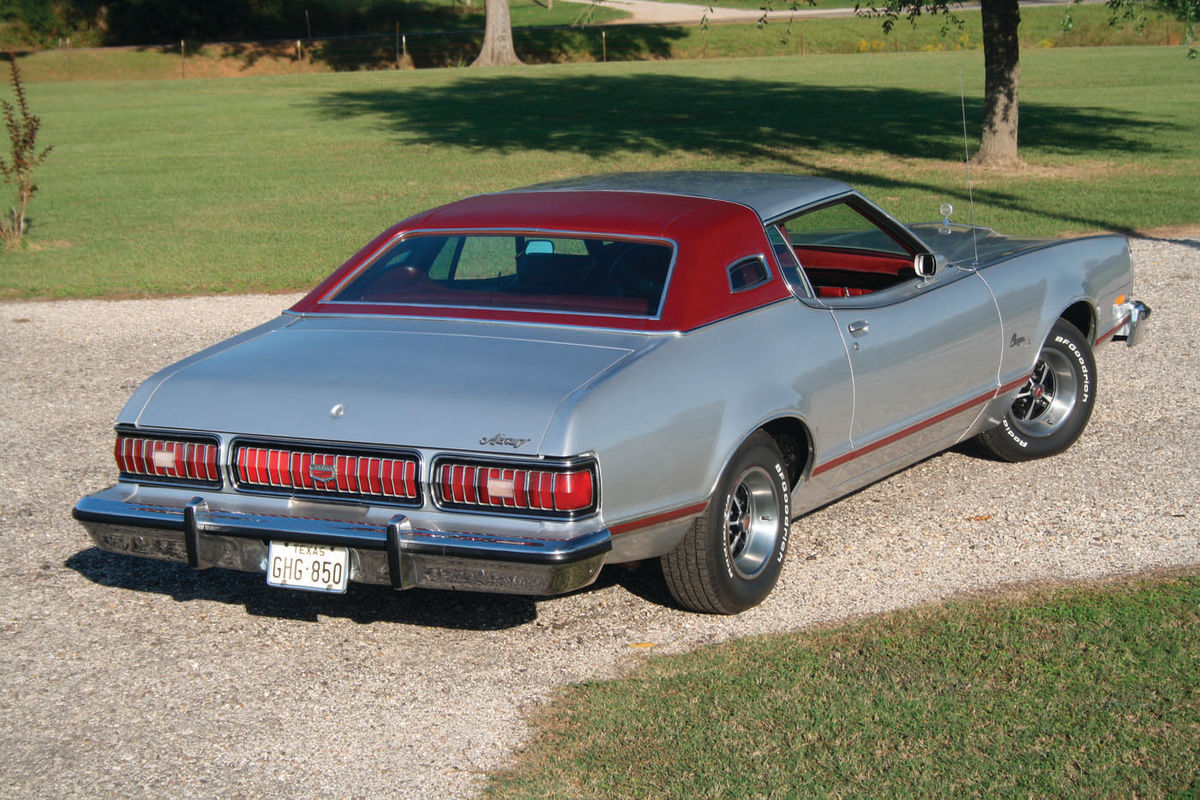
However, as the project progressed the painter found more work than he initially expected. Even so, he honored the agreement. Some parts of the sheet metal were fully stripped to bare metal; other areas were sanded until the underlying surface was judged as a suitable surface to paint. Some of the old paint peeled away in the sanding process and those areas had to be fully stripped to bare metal.
Prior to taking the Cougar to the paint shop, Buie had completely stripped the old silver vinyl top from his car. A silver vinyl top on a silver car was not aesthetically appealing to Buie, so once he had removed the surface rust from the rear section of the roof with a dual-action sander and applied fiberglass over the pinholes, he primed and painted the area with a dark red paint to get an idea of how that color vinyl would appear to him. He judged it as a great improvement. (For 1976, a Cougar XR7 magazine ad promoted “The Silver Cat” in “gleaming metallic silver paint.” Like the 1975 version acquired by Buie, it had silver vinyl on the roof and a silver insert for the side trim.) For Buie’s car, the side molding silver insert was dyed the same dark red color as the landau top.
Once the repaint was completed, Buie took his car to a local upholstery shop and had the simulated landau top applied in the correct material in a shade of dark red matching his car’s interior. Also repaired was the worn left section of the driver’s seat cushion. The shop could not locate cloth with the original pattern and settled upon a closely matching piece to stitch in place.
The original dash pad—which had cracked years ago—remains in place covered with thin carpeting. The same material was used to cover the replacement package shelf that was cut from the same material upholsterers use to form door panels. The original package shelf, which had decayed, was made of painted fiber board. Buie thought the carpeting looked better than a painted, non-textured surface, hence the change from factory spec. Furthermore, the original shelf had the two grilles for the stereo speakers formed in place. Duplicating this would have been somewhat difficult. The replacement shelf had the 6x9 holes cut out and covered by the carpeting.
Body and Trim Components Are Getting Scarce
Sheet metal for the 1974-76 Cougars is getting a bit difficult to locate. Many of these cars fell into disrepair well before collectors gave them much thought, so as a result many have long since been scrapped. Still, there remain some salvage yards specializing in vintage steel. Advertisements for them can be found in hobbyist publications as well as through the Internet. Helping the restorer is the fact that the sheet metal was shared with the 1974-76 Ford Torino Elite (later, simply Elite) and Mercury Montego, although the Elite and Montego are about as uncommon now as the Cougar. Other interchangeable exterior parts between these models include the front and rear bumpers and glass except for the opera window glass. Front fender end caps, grilles, and head and tail light assemblies also differ. Still, major sheet metal is virtually the same. Luckily for anyone needing sheet metal components, the Cougar’s body went unchanged from 1974-76. One especially challenging task is repair/ replacement of the flexible filler panel behind the bumpers. These pieces were not designed for great longevity and, therefore, they typically cracked badly over time as they were exposed to UV light and other elements. Another challenge is locating good wheel lip moldings when needed.
Reproduction rubber parts include that for the roof rail, doors, and trunk lid. Also available is the window felt, or window sweeper “fuzzies.” These are available through Steele Rubber Products. At the time this story was written, CTC Auto Ranch in Denton, Texas, had two 1975 Cougar XR7 parts cars plus two each of the 1975 and 1976 Elites; a 1974 XR7 was at Roblins Garage in Demorestville, Ontario; a 1974 parts car, a 1976 XR7 (described as a running project car) as well as 1974-76 Ford Elites were in the inventory at Desert Valley Auto Parts in Phoenix, Arizona. Incidentally, Buie purchased the left rear lower trim piece for his car through CTC Auto Ranch. Underscoring the point made earlier about these cars having a high scrap rate is the experience Buie had when attempting to obtain some trim through West Coast Cougars in Salem, Oregon, which had advertised having several parts cars available. Buie’s timing was off…the owner had very recently crushed his inventory of 1974-76 Cougars as they generated little to no sales.

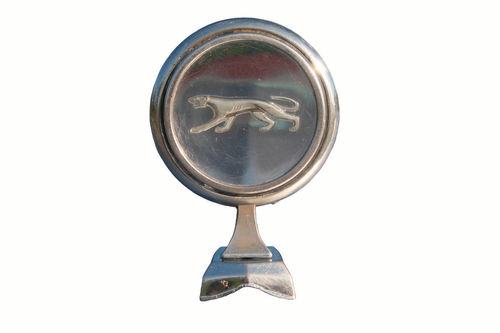
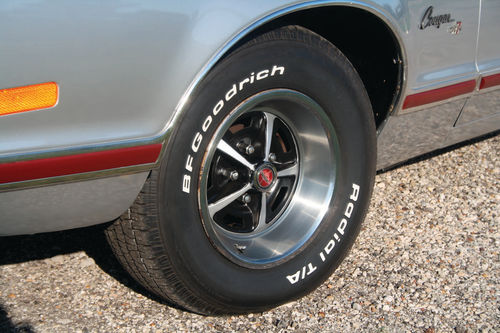
Mechanical Parts Availability Is Better
On the other hand, major mechanical parts are not too difficult to acquire because of the large number of applications for them over many years. Suspension and brake components are still readily available through retail parts stores. Engine parts, too, are still plentiful for the V-8s which powered these cars.
The 351 Windsor, also known as the 351W, was issued for the 1969 model year. The Windsor series dated to the 1962 Fords (in 221 cid form) when it replaced the Y-Block. This series included the 289 and 302.
For the 1970 model year, the 351 Cleveland or more simply the 351C, was released and was a member of the 335 Series of engines. Later that year, the 400 cubic-inch variant was also released for the passenger car line. The 351C was dropped at the end of the 1974 model year. It, however, was not officially offered for the 1974 Cougar—none are known to have received this engine. The standard Cougar V-8 was the 351 Windsor with the 400 available at extra cost.
Another series of engines, the 385 (a.k.a., Lima) series, was also released for 1969. It included the 460 which was another option for the Cougar XR7.
Replacement parts for any of the engines which powered the 1974-76 models are generally still readily available. Incidentally, the 351 Windsor was not phased out of automobile use until the early 1990s and remains available in crate form.
For 1975, the output of the 351 dropped from 162 hp at 4000 rpm to 148 at 3800. Torque also decreased. These ratings are SAE net, a standard adopted by the auto industry with the advent of lower compression ratios.
Ford’s 400 was known for a design problem which plagued it…detonation (pinging) was a drawback when the federally-mandated removal of lead from gasoline took effect. There was no high-octane unleaded available for some time. Even with retarded ignition timing, the problem persisted. Eventually, the compression had to be lowered to 7.33:1 to solve this issue.
Today, performance build-up services are offered for both small block engines as well as the 460. (As an example, one article found on the Internet detailed how 500 hp was obtained from a Ford 400 small block.)
Also of note is that components for the C4 and C6 remain plentiful so rebuilding a Cougar’s transmission will not be a headache when it comes to getting replacement parts. In fact, ready-to-go, performance-built C4s and C6s are available through various sources. As for our featured car, the engine and transmission remain factory stock.
He Knew Just What He Wanted
The 1974-76 Cougar XR7s are uncommon finds today and major restorations on these will cost plenty, just like any other 1960s/’70s automobile.
However, nice examples do exist and with a little patience one can be had in ready-to-go form for a far more reasonable cost than one that is a major project. And once found, the owner of that ready-to-go car will probably have the distinction of having the only one present at a local cruise-in or show unless, of course, the event is held by the Cougar Club of America. Even in that case, Cougars of this era will certainly stand out from the rest.
Ironically, if you are considering a total restoration, about the worst car a restorer should tackle from the perspective of cost is a vehicle such as the one featured here.
With that in mind, Buie was fully aware that his restoration would not be equal to a high-dollar type, but then perfection was not his pursuit. Buie put approximately $4500 into his Cougar and says “I’m happy with what I got for the money spent.”
In this case, he chose to balance expectations and cost, and in the end his project resulted in a car that stands out in a crowd of vintage vehicles…and is very pleasurable to drive.
Resource
Cougar Club of America
c/o Rob Merritt
28 W. 8th Street, Duluth, MN 55806-2515

